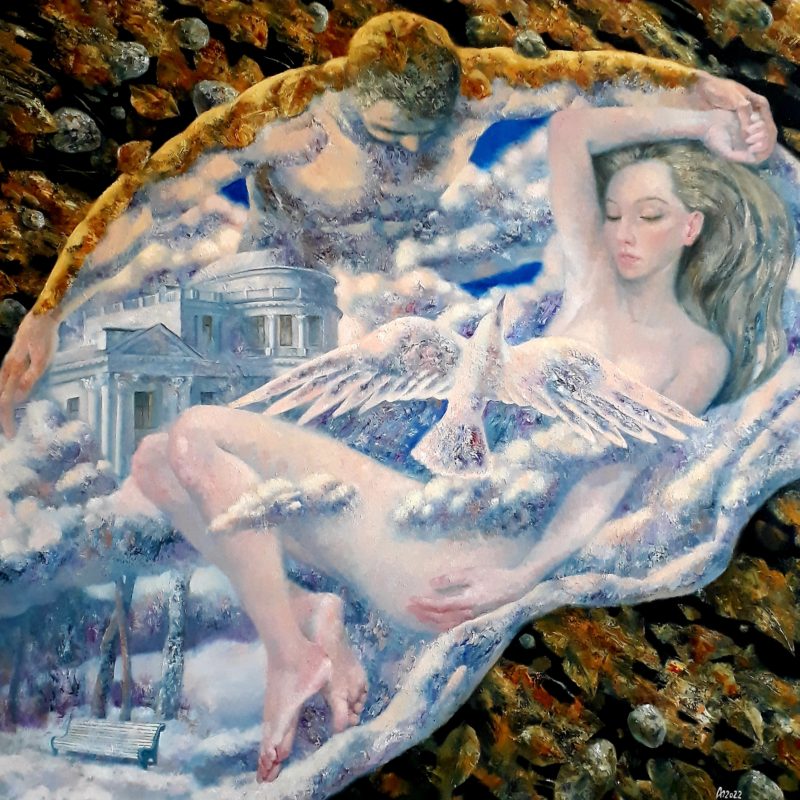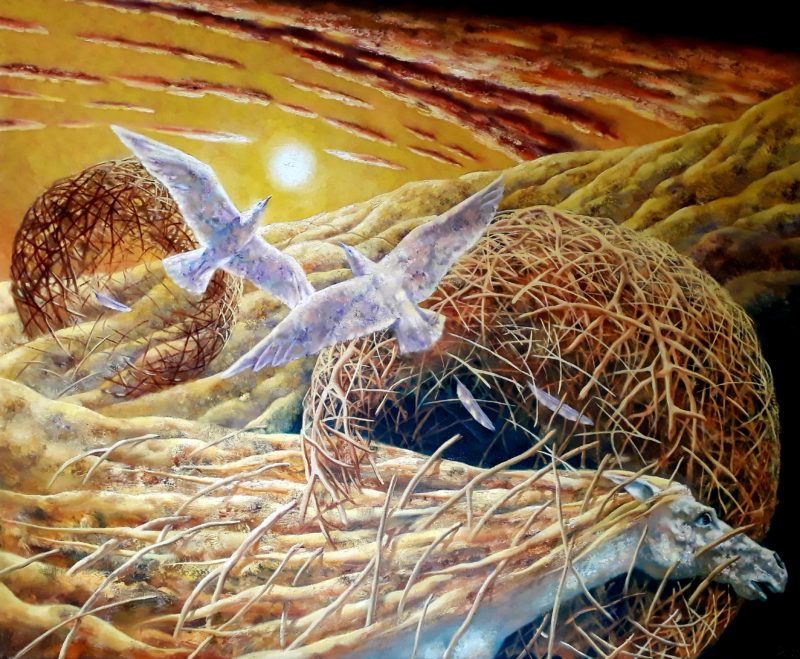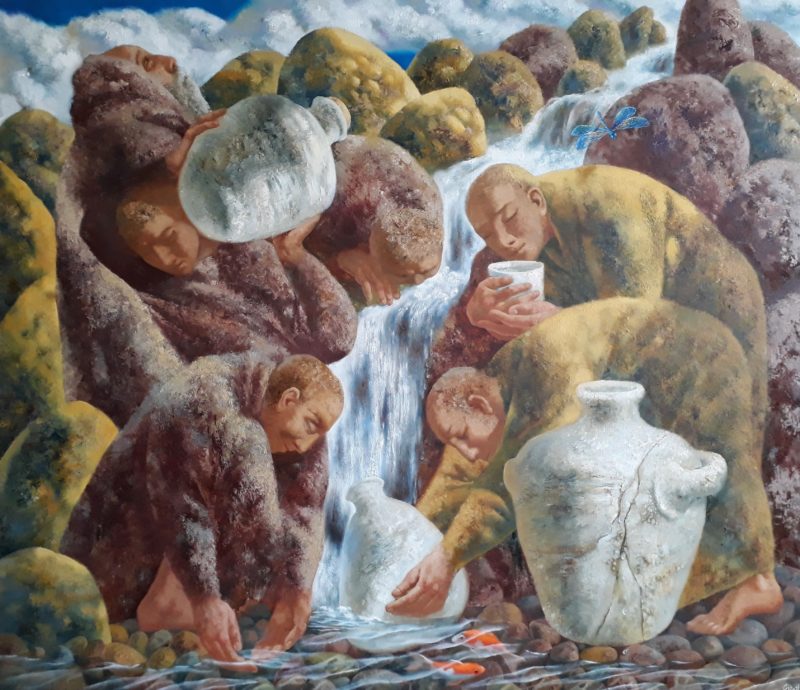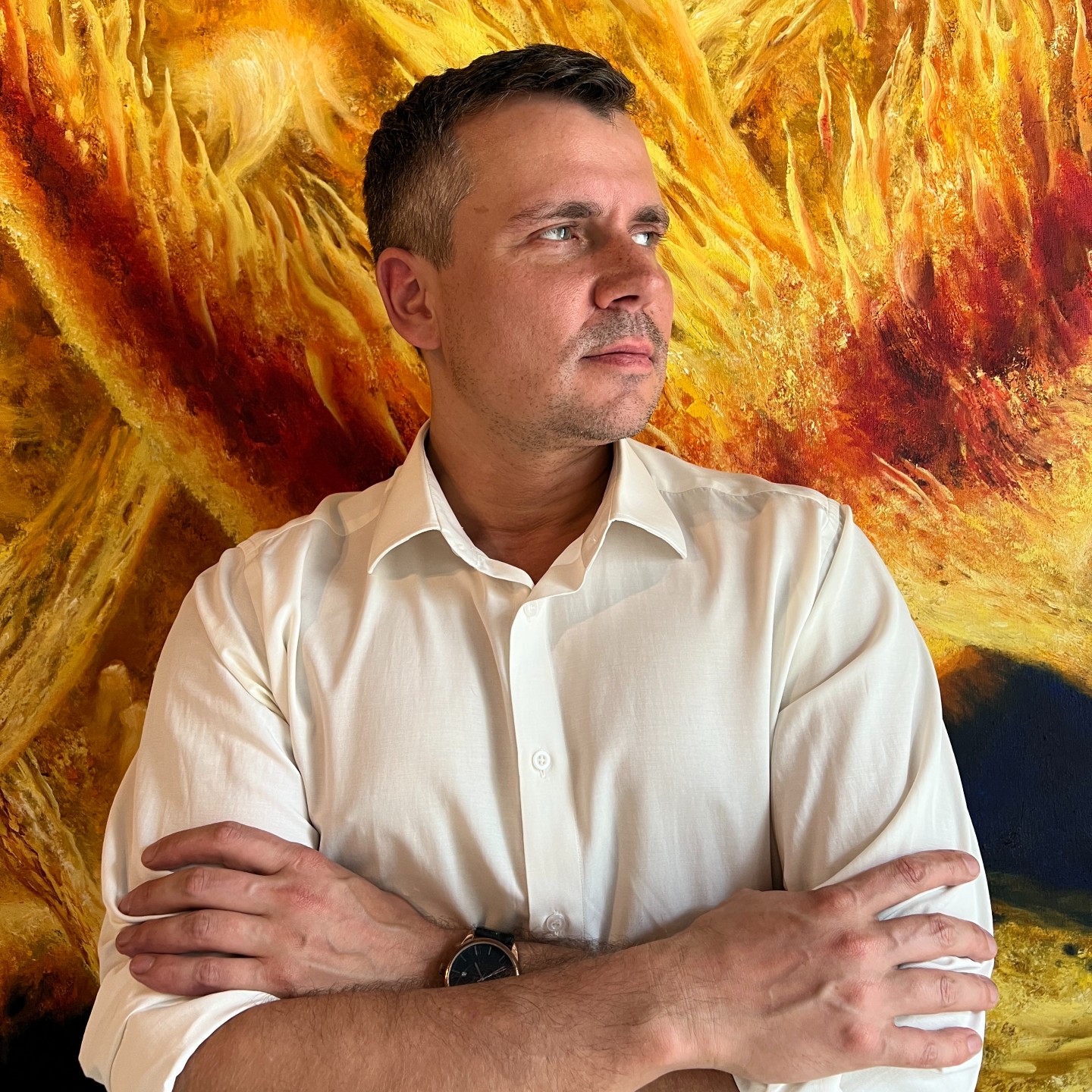Paintings by Pavel Antipov portray a dreamlike world in which physical and metaphysical realities merge. The artist indues his works with multiple symbolic references that are very interesting to decipher. Fine Art Shippers spoke with Pavel Antipov about his creative process, artistic and religious experiences, and the best things in the artist's life.
Artist Talk: Pavel Antipov on the Joy of Creation
Your paintings are full of mysticism and surreal visions. Why are you attracted to otherworldliness? What piques your interest?
Pavel Antipov: Overall, I'm interested in the unconscious, and dreams are what the unconscious manifests through. I don't depict specific dreams in my paintings; rather, they are a metaphor for human interaction with the world.
The starting point is often my personal emotions and experiences, which morph into more general ideas as I progress. I think my own emotions are only interesting to myself, but when I generalize them to the point that they turn into a symbol, they become interesting to other people. And each time it's a matter of finding the appropriate artistic language: the form, the color, the rhythm, the architecture, etc. In my work, I create material images of metaphysical reality, that's why I refer to archetypes. Since they are the foundations of the human psyche regardless of culture, they take similar forms in Slavic or Greek paganism, in Asian or Native American religions.

Many of your paintings are big. Why do you like large formats? How does size help you realize the idea?
I love making large-scale paintings. I feel like it allows me to express myself emotionally. You can use bold brushstrokes while focusing on smaller details, creating a kind of symphony on the canvas where multiple elements blend into a harmonious whole.
You studied at the Abramtsevo Art Industrial College and the Repin Art Institute. The former teaches more design-oriented skills, while the latter is known for its academic training. How have these two approaches shaped your style?
You can see that my work is not purely academic. Abramtsevo College instilled in me a love for conventionality. At the Repin Academy, I studied with the prominent theater artist Eduard Kochergin, and a certain theatricality is always present in my works.

How do you think a contemporary artist can be commercially successful?
I think it's essential to have assistants who do the administrative work. My assistant Anna takes care of my correspondence and schedule and plans my participation in events that help promote my work. And the artist just has to make art, experiment, and develop his or her style. The administrative side of things is extremely distracting and not at all conducive to creativity.
Can you tell us something about your daily routine? What does your usual day look like?
I get up with the sun, because my cat wakes me up. It takes me a while to tune in for the day ahead, and by 8 a.m. I am already at the easel. I work for about five hours before taking a break and then getting back to work. It's different, though, when I have meetings or other things to attend to.
How many paintings do you create in a year?
It varies because I also get other commissions that take my attention away from painting. For example, some time ago I painted a cathedral. But no matter what I do, I usually work non-stop. As soon as I finish a painting, I immediately start a new one. That brings me energy and joy.

What kind of experience was painting the cathedral: artistic, religious, or both?
It was neither purely artistic nor religious. First and foremost, it is research. When I paint an Orthodox cathedral, I have to immerse myself in the religious symbolism to know what I am painting. If I were painting a Buddhist temple, I would study that culture and religion in depth. And that's what excites me about my work: you always have to go beneath the surface of things.
What do you find most fulfilling in the life of an artist? What gives you the most joy?
Creating artwork is such an uplifting process. Once the idea takes shape in my head, I can not wait to start working on it. What excites me the most is that the creative process never drains your energy; on the contrary, it evokes so many positive emotions that it becomes addictive. You want to keep going and going because it makes you so happy. If the creative process does not give you pleasure, it is a sign that you are just doing a job without being emotionally and intellectually involved in it.
How do you go about when you need to ship your work?
Sometimes I bring my paintings in tubes when I travel to exhibitions, but it's very inconvenient. Working with a specialized art shipping company saves you a lot of trouble and stress. If you need to transport artwork long distances, it is preferable not to remove the canvases from the stretcher bars. Also, shipping professionals know how to pack, unpack and install art without accidentally damaging it. So yes, finding a trusted shipping partner is a big deal.
Photo courtesy of Pavel Antipov
